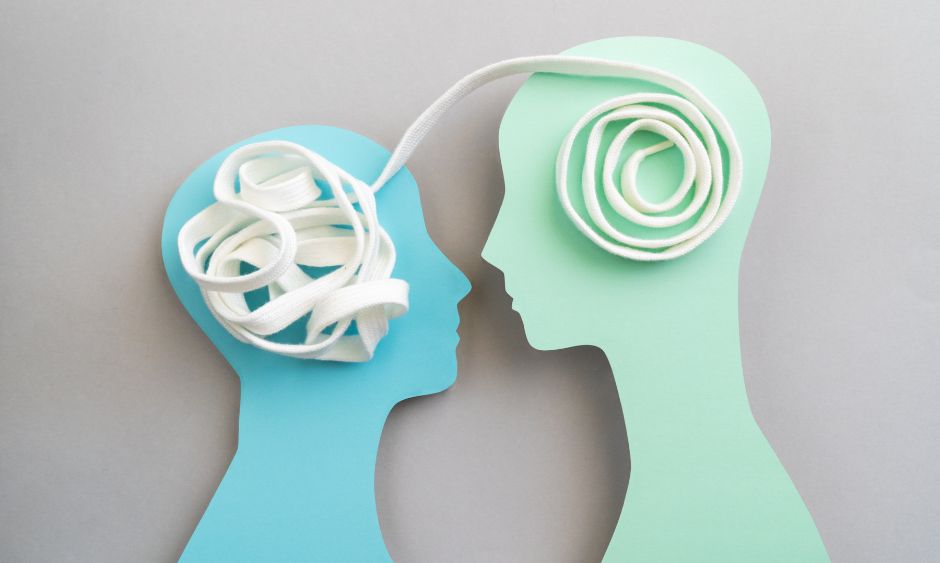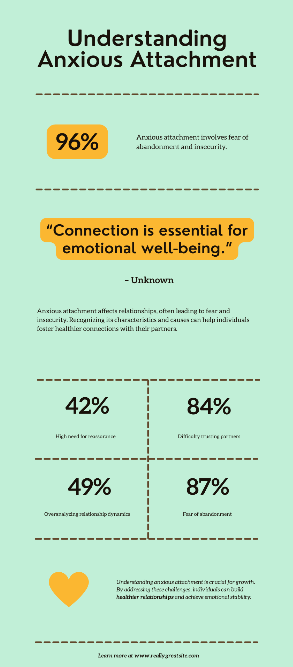As a life coach for women, I know first-hand that many women experience feeling profoundly “stuck” in their lives, and that it can be a very...

Why Should A Woman Hire A Female Life Coach?
As a life coach for women, I know first-hand that many women experience feeling profoundly “stuck” in their lives, and that it can be a very distressing time for them that can lead to very strong feelings of isolation and desperation. This is particularly true for women who do not have a strong social network of peers or girlfriends. I understand this experience because I went through this myself during my 50s. It became one of the reasons I decided to become a Life Coach. My four children were grown and away at university, and I felt my sense of purpose dwindling. Even women who are not looking for a confidence building coach per se, can still benefit from working with a female Life Coach for a myriad of reasons I will address in this blog post. Regardless of your reasons, working with a mindset coach for women in London will likely turn into the best decision you have ever made for yourself. I specialize in helping women gain clarity on what they want and figure out an actionable game plan to achieve those goals.
Feeling “stuck” is a common experience, and for many women, that can stem from a mix of societal pressures, personal fears, and life transitions. Here are a few key reasons:
- Cultural and Social Expectations – Women often navigate expectations around career, family, relationships, and personal identity. Trying to meet all these demands can create pressure, leading to self-doubt or hesitation in making changes.
- Limiting Beliefs and Self-Doubt – Negative self-talk, perfectionism, and the fear of failure can prevent women from taking steps toward their goals. Many struggle with imposter syndrome, feeling like they’re not “good enough” despite their achievements.
- Life Transitions – Whether it’s motherhood, career shifts, divorce, or aging, major life changes can leave women feeling uncertain about their next steps or disconnected from their personal ambitions.
- Emotional and Mental Exhaustion – Balancing multiple roles—caregiver, professional, partner—can lead to burnout, making it difficult to focus on personal growth or new possibilities.
- Feeling Invisible or Undervalued – Some women feel unseen in their careers, relationships, or personal lives. When their efforts go unrecognized, it can erode motivation and make forward movement feel impossible.
- Lack of Support or Guidance – Without mentors or a strong support system, it’s easy to feel isolated when navigating challenges. This is where a life coach can be invaluable, providing encouragement and actionable strategies.
The good news is that feeling stuck isn’t permanent. It is a signal that change is needed. Exploring solutions, reframing mindset, and seeking support can open doors to new opportunities.
Women can feel stuck in various aspects of life, often due to external pressures, self-doubt, or uncertainty about the next steps. Here are some common scenarios:
- Career Stagnation – Feeling unfulfilled in a job but unsure how to transition to something more meaningful.
- Relationship Uncertainty – Staying in a relationship that no longer feels supportive or fulfilling but struggling to make a change.
- Identity Shifts – Experiencing a major life transition (motherhood, divorce, retirement) and feeling lost in the process.
- Financial Limitations – Wanting to pursue new opportunities but feeling constrained by financial insecurity.
- Fear of Failure – Having dreams and ambitions but hesitating to take action due to self-doubt or fear of judgment.
These feelings of being stuck can be frustrating, but they often signal a need for growth and change. Working with a female Life Coach offers some unique opportunities for women, one of which is the power of female mentorship.
Female Life Coaches Offer The Power Of Female Mentorship
Female mentorship in Life Coaching is more than just guidance; it’s a transformative experience that fosters confidence, resilience, and growth. The unique strength of female mentors lies in our ability to create deeply supportive relationships, offering wisdom shaped by personal experience and empathy.. We help our clients create a vision and action plan by guiding them through structured exercises that clarify their goals and break them down into achievable steps. Here’s how we do it:
- Visioning Exercises: We use techniques like visualization, journaling, or guided reflection to help clients articulate their ideal future.
- Defining Core Values: We encourage our clients to identify what truly matters to them, ensuring their vision aligns with their authentic self.
- Setting SMART Goals: We help our clients create Specific, Measurable, Achievable, Relevant, and Time-bound goals to turn their vision into reality.
- Breaking Down Action Steps: We assist our clients in mapping out small, manageable tasks that build momentum toward larger goals.
- Accountability & Motivation: We offer regular check-ins and encouragement to keep clients focused and committed to their plan.
- We help our clients create Vision boards to give their goals a tangible face and create a way to take them from being just a dream to reality.
Encouraging Confidence & Self-Belief
One of the most profound aspects of female mentorship is its impact on confidence. Many women struggle with self-doubt, impostor syndrome, or limiting beliefs. A strong female mentor provides reassurance, validating experiences, while challenging negative thought patterns. This mentorship helps clients step into leadership roles, pursue ambitious goals, and learn how to trust their instincts which is something many women lack the ability to do.
Creating Safe Spaces for Growth
A key element of Life Coaching is the ability to hold space for vulnerability and honesty. Female mentors excel at this, and are able to foster environments where clients feel seen, heard, and empowered. These safe spaces allow for deep reflection, encouraging personal breakthroughs and emotional resilience.
Breaking Down Barriers & Opening Doors
Women mentors help dismantle systemic barriers by offering practical strategies to navigate challenges in professional and personal spaces. Through shared experiences, they provide roadmaps for success, from negotiating for better opportunities to balancing ambition with well-being.
Fostering Meaningful Connections
Mentorship is not just about individual growth. It’s also about expanding networks, building communities, and supporting collective success. Female mentors introduce clients to like-minded individuals, opening doors to collaborative opportunities and long-term relationships that drive personal and professional development.
Championing Holistic Growth
Life Coaching guided by female mentors usually takes a holistic approach, recognizing that success is not just about achievement but also about well-being. We encourage our clients to embrace balance, nurture self-care, and honor their full selves.
Female mentorship in Life Coaching isn’t just powerful, It’s a necessary component in the growth of women clients who feel stuck because it cultivates strength, inspires change, and reminds us that success is not meant to be walked alone.
How We Help Women Break Through Limiting Beliefs
Female Life Coaches use empowerment coaching to help clients break through limiting beliefs. We create a supportive space where our clients can identify negative thought patterns, challenge them, and replace them with more empowering perspectives. Here are some key strategies we use:
- Rewriting Inner Dialogue: We help our clients recognize self-sabotaging thoughts and reframe them into positive affirmations.
- Identifying Root Causes: We help our clients explore how limiting beliefs develop, often stemming from childhood experiences, past failures, or societal conditioning.
- Asking Powerful Questions: We ask our clients thought-provoking questions like “What’s stopping you?” or “How do you know that’s true?” thus helping our clients uncover hidden barriers.
- Challenging Beliefs with Evidence: We encourage our clients to find real-life examples that contradict their limiting beliefs.
- Encouraging Action: We guide our clients in taking small, confidence-building steps toward their goals, reinforcing new, empowering beliefs.
This approach is especially beneficial for women, as societal expectations can contribute to self-doubt and impostor syndrome. By working with a coach, clients gain clarity, confidence, and the tools to rewrite their individual, personal narratives. And, because we know that every client is unique, we foster this through deep listening by using active listening skills.
One way female Life Coaches use evidence to challenge limiting beliefs is by helping clients find real-life examples that contradict their negative assumptions. For instance, if a client believes, “I’m not good enough to start my own business,” a coach might ask:
- “Has there ever been a time when you succeeded despite self-doubt?”
- “Do you know someone who started a business with similar challenges?”
- “What skills or experiences do you already have that prove you’re capable?”
By guiding clients to recognize past successes or external examples, coaches help them reframe their mindset and see that their limiting belief isn’t an absolute truth. This process builds confidence and encourages action.
Female Life Coaches help women navigate life transitions by providing guidance, emotional support, and practical strategies to manage change with confidence. They focus on helping clients redefine their identity, set new goals, and embrace uncertainty as an opportunity for growth. Here are some key ways they assist:
- Clarifying Values & Priorities: We help our clients assess what truly matters to them, which ensures that their next steps align with their authentic selves.
- Building Resilience: We provide tools to manage fear, self-doubt, and emotional overwhelm, fostering a mindset that embraces change.
- Creating Actionable Plans: We help our clients break down transitions into manageable steps, which helps them move forward in an organized, logical way with clarity and purpose.
- Providing Accountability & Encouragement: We provide regular check-ins and support to ensure women stay motivated and committed to their new path.
- Navigating Identity Shifts: Whether it’s career changes, motherhood, or personal reinvention, we help our clients redefine their roles and embrace their evolving identity.
Some coaches specialize in career transitions, relationship changes, or personal reinvention, tailoring their approach to each client’s unique journey.
Yes, many Life Coaches pursue certifications to enhance their credibility and expertise. While coaching is an unregulated industry, several well-recognized organizations offer certification programs. Some of the most respected certifications include:
- International Coaching Federation (ICF) – One of the most widely recognized credentials, offering different levels of accreditation based on training hours and experience.
- Certified Life Coach Institute (CLC) – Provides structured training for aspiring Life Coaches.
- Coach Training Alliance (CTA) – Focuses on both coaching skills and business development.
I myself am certified by Coach Training Alliance in the United States. - Health Coach Institute (HCI) – Offers dual certification in life and health coaching.
- iPEC Coaching – Known for its comprehensive training in energy leadership coaching.
Each program varies in cost, duration, and focus.
Building Confidence and Emotional Resilience
Female Life Coaches help their clients build confidence and emotional resilience by guiding them through structured techniques that challenge self-doubt and reinforce self-worth. Here are some key approaches they use:
- Reframing Negative Self-Talk – Coaches help clients recognize limiting beliefs and replace them with empowering affirmations.
- Identifying Strengths & Achievements – They encourage clients to reflect on past successes, reinforcing their ability to overcome challenges.
- Setting Small, Achievable Goals – Confidence grows through action, so coaches help clients take manageable steps toward their aspirations.
- Providing Accountability & Encouragement – Regular check-ins ensure clients stay motivated and recognize their progress.
- Developing Self-Compassion – Coaches teach clients to treat themselves with kindness, reducing self-criticism and fostering resilience.
Some coaches specialize in confidence coaching, offering tailored programs to help women embrace their strengths and step into their power
Creating a Vision and Action Plan
Female Life Coaches help their clients create a vision and action plan by guiding them through structured exercises that clarify their goals and break them down into achievable steps. Here’s how they do it:
- Visioning Exercises – Coaches use techniques like visualization, journaling, or guided reflection to help clients articulate their ideal future.
- Defining Core Values – They encourage clients to identify what truly matters to them, ensuring their vision aligns with their authentic self.
- Setting SMART Goals: We help clients create Specific, Measurable, Achievable, Relevant, and Time-bound goals to turn their vision into reality.
- Breaking Down Action Steps – They assist in mapping out small, manageable tasks that build momentum toward larger goals.
- Accountability & Motivation: We provide regular check-ins and encouragement to help keep our clients focused and committed to their plan.
© D’vorah Elias 2025









